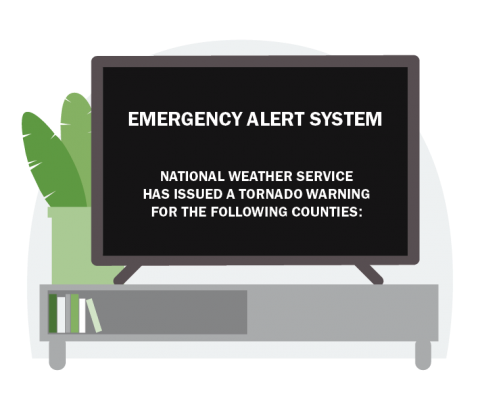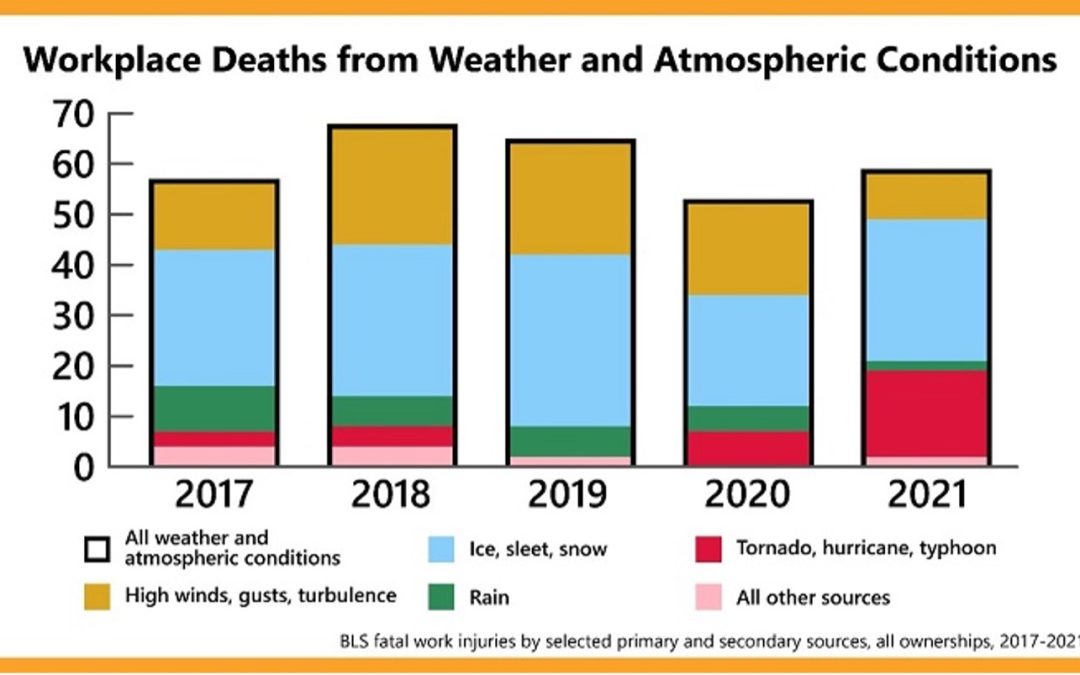According to the U.S. Bureau of Labor Statistics (BLS), about 60 employees die each year from weather-related causes. Severe weather can cause electrocution, drowning, injuries from falling objects, and more. The Occupational Safety and Health Administration (OSHA) Standard 1910.38 requires employers to have a safety plan to protect their workers.
These tips can help:
- Create a written Emergency Action Plan
Consider all potential emergencies before preparing an Emergency Action Plan. While hazardous weather can hit anywhere, take extra safeguards in regions where tornadoes, hurricanes, and flooding are common. Other regions may need to focus more on how to manage ice and snow. Although wildfires are not weather events, they are directly weather-related and may require special planning in some locations.
2. Choose a shelter-in-place location
Ensure employees and visitors know where to go in severe weather. Select a safe space in an interior room without glass doors or windows.
3. Install an emergency alarm system
OSHA requires all businesses to install audible emergency systems. Some facilities may also need a visible alarm to alert employees. Select an employee on each shift to turn on the alarm system if it is not automated.
4. Stock up on emergency supplies
Proper emergency supplies can keep employees safe if they are stranded at work. https://www.ready.gov/ can help keep employees prepared and informed. Some supplies to keep on hand include:
- First aid kits.
- Tools to shut off utilities.
- Flashlights and batteries.
- Emergency weather radio(s).
- Solar-powered phone chargers.
- Water and food for at least three days for each employee.
- Personal hygiene items.
- Masks, sheeting, and duct tape.
5. Provide proper personal protective equipment (PPE)
Sharp objects, tripping hazards, and downed power lines can cause dangers to employees both during and after a storm. Ensure workers have the PPE and the training they need to stay safe.
Wireless Emergency Alerts (WEAs)
Also make sure designated personnel have access to Wireless Emergency Alerts (WEAs) which are short emergency alerts authorities can send to any WEA-enabled mobile device in a locally targeted area. Alerting Authorities who are authorized to send WEAs include state, local, tribal, and territorial public safety officials, the National Weather Service, the National Center for Missing and Exploited Children and the President of the United States.
WEAs look like text messages but are designed to get your attention with a unique sound and vibration repeated twice. WEAs are not affected by network congestion and will not disrupt texts, calls, or in-progress data sessions.
You are not charged for receiving WEAs, and there is no need to subscribe. WEAs are sent through FEMA’s Integrated Public Alert and Warning System.
Children will also receive alerts on their WEA-enabled mobile devices. Parents and guardians, talk to your children about WEA Alerts and staying safe in an emergency. A fact sheet about WEAs for kids can be found here.
If you are not receiving WEAs, here are some tips to troubleshoot your mobile device:
- Check the settings on your mobile device and review your user manual (you may be able to find this online too).
- Older phones may not be WEA capable, and some cell phone models require you to enable WEAs.
- Some mobile service providers call these messages “Government Alerts,” or “Emergency Alert Messages.”
- Check with your wireless provider to see if they can resolve the issue.
All major phone providers and some smaller providers participate in WEA.
Federal Communications Commission (FCC) registry of WEA providers.

Spencer-SHE has been providing Safety, Health, and Environmental Compliance Guidance since 1980. Our team can tailor your Emergency Action Plan and supplies to your specific organization/business needs.
Contact us here to help you to develop and maintain a safe and healthy workforce.
Sources:

